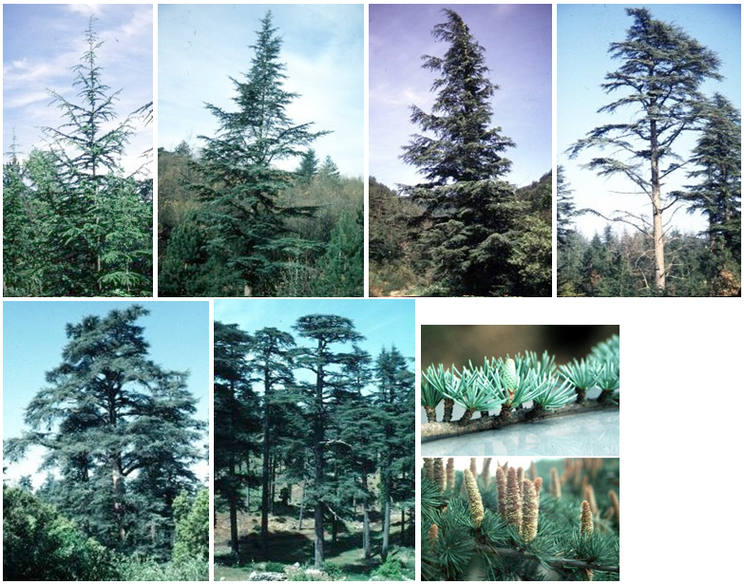Preliminary Courses
Botany. Architectural Analysis
Evaluation. Study case
Architectural Study Case
Morphology and architecture of Cedrus atlantica Manetti
Growth in Cedar is rhythmic and all axes are built up by a succession of annual shoots.
The shoot growth rate decreases progressively from the main stem, which grows in a vertical direction,
to the branches and the branchlets, which grow in a horizontal direction.
Young tree and architectural unit Architectural unit
At the young development stage, the tree presents a pyramidal form.
This architecture shows a very precise organisation as regards the nature
and relative position of morphological discernible categories of axes.
In young individuals of Cedrus atlantica, five different categories of axes may be identifiable.
Adult tree
After the expression of its architectural unit, the tree will continue to develop its trunk and to remain regularly branched. The oldest branches increase their volume by a process of partial reiteration of the architectural unit. At the top of the branches, a sub-apical bud of the annual shoot develops into a vigorous shoot. This phenomenon gives rise to a fork formation. Thus, the repeating of this process leads to the development of branches. In subsequent years, this phenomenon of fork formation gradually invades the branches.
Sexuality appears at this development stage of the tree. The female or male flowers are terminal on brachyblasts which are formed by 3 or 4 vegetative short shoots.
Female flowering affect brachyblasts borne by the most vigorous axes: the main stem, the branches and reiterated branchlets. Male flowering is located on brachyblasts corresponding to the highest orders of branching.

Cedrus atlantica. (Photos S. Sabatier, CIRAD)
Top left to right, and bottom: From young tree to mature tree
Bottom right female (top) and male cones (bottom)
As the tree continues its development, new branches located in the upper part of trees develop in accordance with the architectural unit of these species. In the lower part of trees, the branches form more and more shorter annual shoots and finally die.
The architecture of the old tree tends to bend and only some branched systems still grow upwards.
Old tree
As the tree becomes older, the growth of the main stem gradually decreases. The direction of growth becomes oblique to horizontal. The main stem gradually follows the development pattern of a branch. This phenomenon involves the edification of a "tabular form" of crown.

Diagram of a Cedrus atlantica architectural unit (S. Sabatier, CIRAD)
a) tree elevation view
b) view of a tier of branches
c) view of a twig annual shoot bearing several short shoots
-> If your Quiz does not appear properly try the Flash version .
